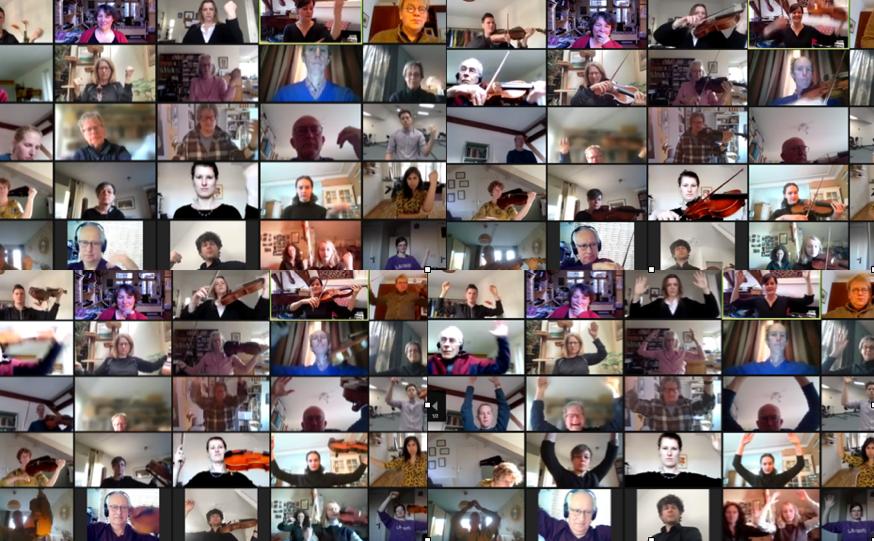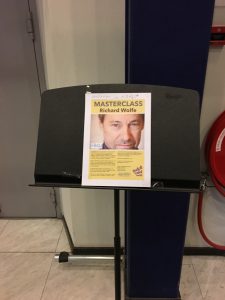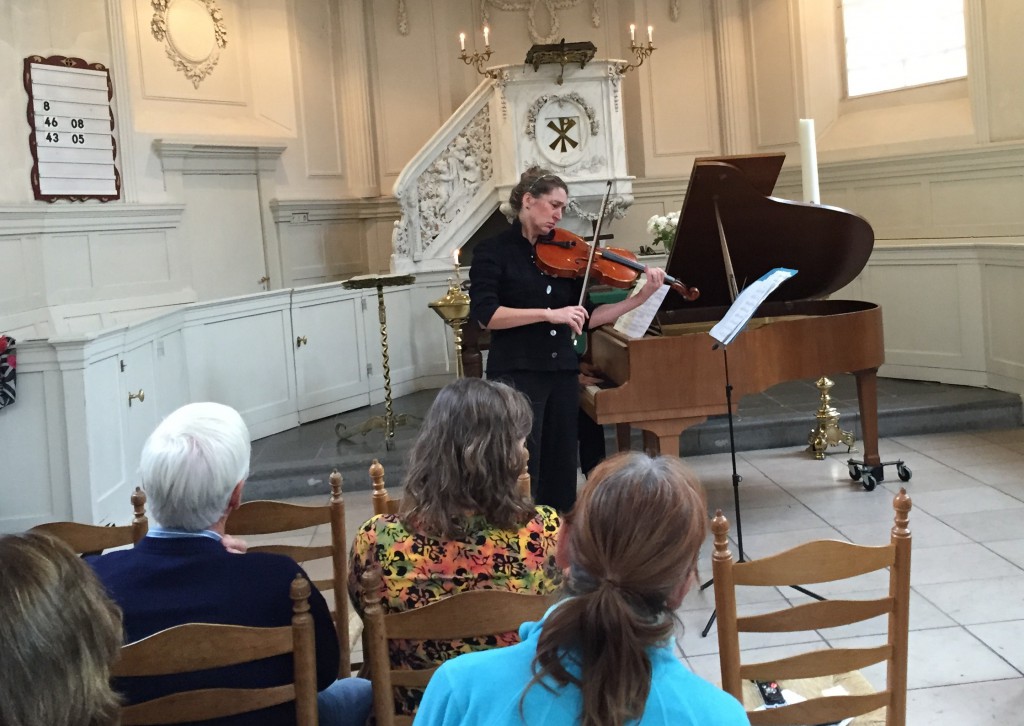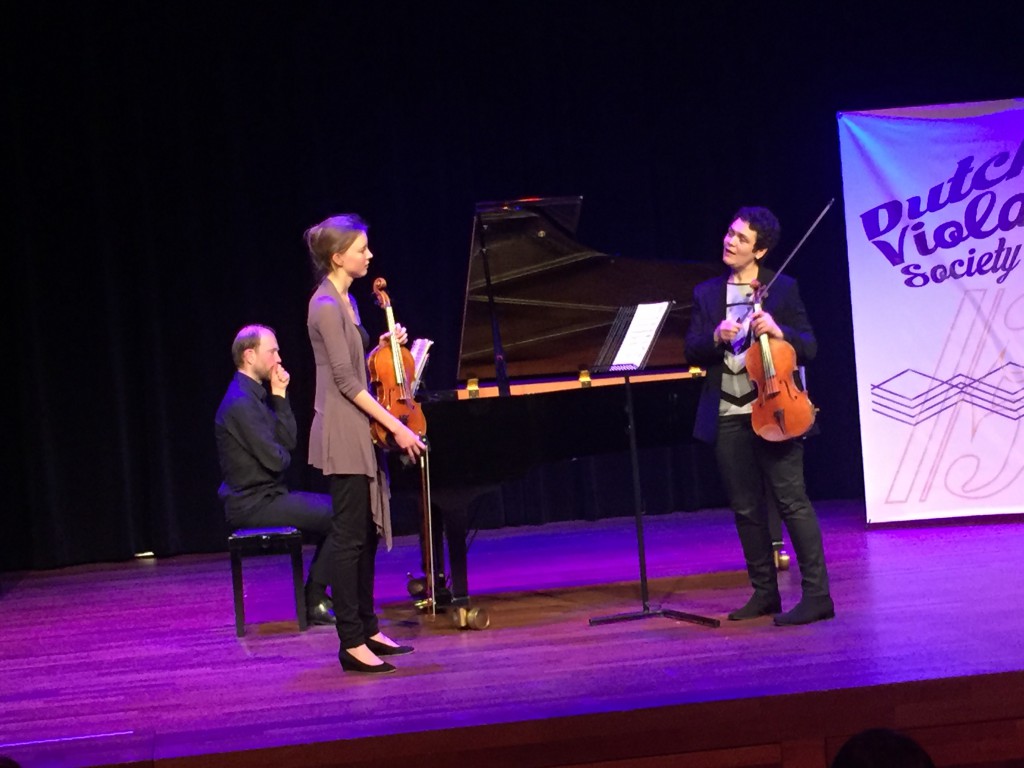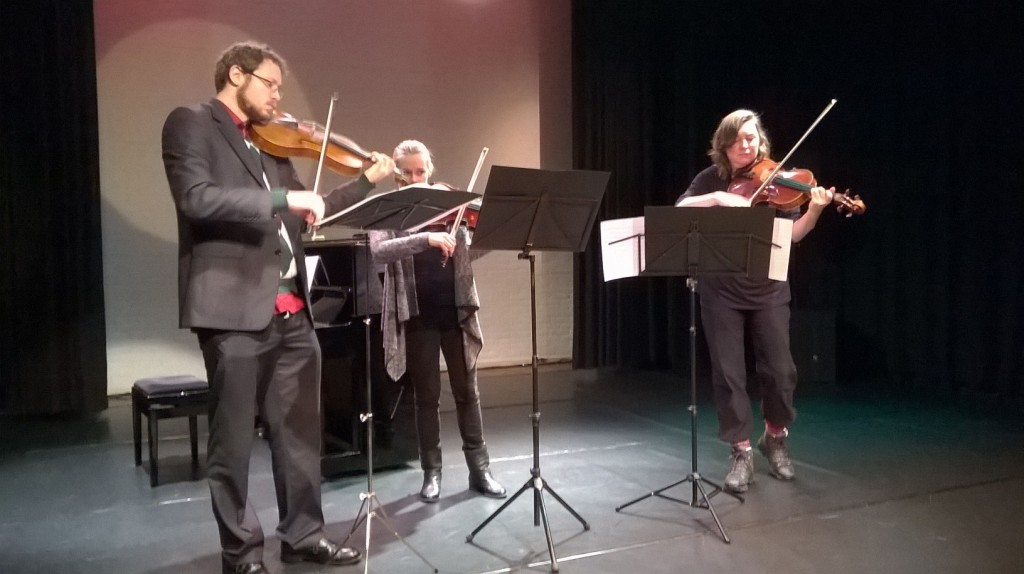The 49th International Viola Congress takes place from 17-21 July in Campinas, Brazil. Your intrepid DVS bloggers bring you the daily debrief from the pulsating heart of the viola world.
Day 4 – Saturday, July 20th 2024
One of the many extra nice aspects of this year’s congress in Campinas is that almost all Congress Presenters are in the same hotel, “The Visiting Professor’s House” (CPV for short) on campus. It’s a mere 10 minutes’ walk to/from the Music Institute (Congress venue), and it even features a luxurious swimming pool, which there is unfortunately absolutely no time to hang out in. But we all meet and mingle during the café de manhã (breakfast), accompanied by a handsome variety of Brazilian bolos (cakes) and pasteles (pastry).
After the daily 08.30am Viola Ensemble rehearsal, the first lecture of this fourth congress day was “Bowing Practices in the Baroque Era” by prof. Christine Rutledge (University of Iowa). She had prepared a really nice handout with lots of bowing examples from Bach and Telemann classics. She discussed the controversy over dogmas such as the “wretched rule” (sic, Geminiani) of the French baroque school, prescribing a default down-bow on every first beat. To get past this, prof. Rutledge suggested a number of aspects to be considered when designing your own ‘best bowing’. These are essentially corollaries to key principles of “informed performance practice” such as knowing the style and rhetorical aspects of the work, and to be aware of the characteristics of various baroque-era dance styles (e.g. Courante, Sarabande, Gigue, Minuet). She showed with played examples how also tempo could influence the choice of slurring. Prof. Rutledge also mentioned the relevance of using a baroque bow, insofar as this changes the physics of the bowing game. One should avoid the temptation to compromise the stylistically ideal strategy simply because one is using the wrong materials. A perfectly fine baroque bow can be bought for a fraction of the price of classical bows.
The French delegation at this congress – Karine Lethiec and Francoise Gneri – had a full program in the auditorium this morning. Due to the Bach lecture upstairs I had to miss the first part – a very intriguing program of viola duos. But I was able to attend the recital “MUSICoMAN – The french contemporary new viola repertoire” with Karine Lethiec. Herein new works for solo viola were combined with poetry and images relating to prehistoric archaeological finds such as the Dame de Brassempouy – a 30,000 years old stone carved femaie head. It was all very artfully curated video – with glimpses of Karine herself playing in ancient locations. The audience clearly appreciated all the work that had been invested in this project! Here’s the compete playlist of YouTube (including interviews and extended clips not shown in the recital).
In the afternoon I attended the workshop “Teaching music with visualization” by our Finnish colleague Lauri Hämäläinen. He has literally created “The Amazing Violin Comics: Tips for practicing and mental images for learning stringed instruments“, a comic book that visualizes various ergonomic / physical tips and insights related to violin and viola playing (Amazon link here). The common denominator of these exercises – practiced in the workshop – is that they visualize physical analogies of various posture / motoric motion aspects of playing the viola (or violin).
This year, the IVS Annual Presidents’ Meeting functioned (for the first time!) as a hybrid online / live event. The presidents from a handful of societies (Canada, Italy, Finland, Poland, Portugal) joined us online, while the rest (South Africa, Norway, Brazil, Netherlands, France, USA, China plus the IVS board) were together in classroom 41 in Campinas.
First some key announcements: The next IVC Congress will be held from 13-17 August 2025 in Xi’an (China), with the theme “The Silk Road through the four strings of the Viola – East, West, Tradition, Novelty“. Featured artists include Ning Shi, Atar Arad, Garth Knox, Paul Silverthorne, Haofu Chang and Antonello Farulli. The congress website is already online (link here – note: you can switch to the English-language version using the top right menu selection).
The 2026 IVC Congress has also been decided: it will be only 5 months after the Xi’an congress, 19-23 January 2026 in Paris (France)!
One key general discussion topic was (same as last year in Salaya) the urgent need for rejuvenation of the IVS and some of the older sections that have been declining in recent years. The newly established IVS youth chapter “Juventus“, spearheaded by Nehir Akansu and friends, could hopefully become a catalyst in this process by developing a new and enthusiastic generation of “viola society leaders”. Several constructive ideas were fielded by the meeting delegates.
Due to the IVS meeting, I unfortunately missed the introduction to the much-anticipated performance “Works for Viola and Taonga Puoro” by Sophia Acheson (viola) and Ariana Tikao (taonga puoro, a collection of traditional Maori musical instruments); and I also missed the poignant circumstance that this performance had been dedicated to Sophia’s sister Helen, who died suddenly one year ago today. Those of us who attended the 2017 IVC in Wellington will be able to remember that Helen performed (as a mezzo-soprano) together with Sophia at that congress.
The taonga puoro programme did not disappoint! It held a full hour of captivating soundscapes – a feast for the eyes and the ears (although the airco once again snuffed out the subtler parts of the audible spectrum). I lack the language to properly describe what I saw, heard and felt – but it was overwhelmingly beautiful! The performance culminated in a veritable viola quartet (big soft spot for me!) when Sofia’s former teacher Donald Maurice and others joined her on stage. Now that Donald has declared his final retirement, it seems that his former pupil is picking up where he left off with his Taioro collaboration.
Next, Emlyn Stam and Sherry Grant took the stage with “Vio-Latino: new works from the South American diaspora”, a program consisting entirely of specially commissioned (and hence World Premiere) works by contemporary South American born composers who have since moved to other continents. This music was accompanied by projections of South American art and poetry. The two musicians showed excellent command of the powerful musical language – virtuosic and dynamic, so the performance was very engaging. After the congress they will tour this programme in São Paulo, Buenos Aires and Santiago de Chile.
The evening concert with the accomplished Chilean violist Georgina Rossi and her pianist Milena Lopes featured a predominantly Chilean programme with works by Osvaldo Lacerda, Federico Heinlein, Ernani Agular, David Cortés and Juan Orrego-Salas. It was an impeccable performance, offering insights into a sphere of music that is rarely heard in Europe (although she did perform a work by Chile-based composer Rafael Diaz at the congress in Rotterdam, 2018).
A late-night “Viola Café” had been announced to take place in a pizzeria some 20 minutes’ walk from the Unicamp Music Institute. Rather against my principles, however, I succumbed to my feeling of fatigue and walked in the opposite direction towards our hotel, only to be hijacked by a spontaneous pizza-and-beer event in the hotel mezzanine foyer. The battle cry “Kaaah!!” (borrowed from Emlyn’s VioLatino concert) served as mandatory entry password. Live choro improv arose from one corner of the room, while repeated sips of Cachaça and chocolate liqueur made a blur out of time. That’s the true spirit of viola congresses working its magic!
Kristofer Skaug, DVS











